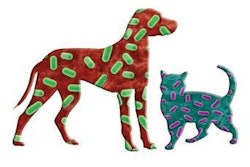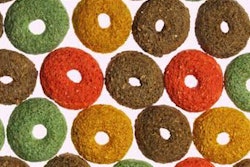High dietary salt (NaCl) concentrations are assumed to be beneficial in preventing formation of calcium oxalate (CaOx) uroliths in cats, since increased water intake and urine volume have been observed subsequent to intake. The aim of this study was to clarify the role of dietary NaCl in the formation of CaOx uroliths in cats.
Eight cats received four diets that differed in Na and Cl concentrations. Each feeding period consisted of a 21-day adaptation period, followed by a seven-day sampling period for urine collection. Higher dietary NaCl concentrations were associated with increased urine volume and Na excretion. Urinary Ca concentration was constant, but renal Ca excretion increased from 0.62 to 1.05 mg/kg bodyweight (BW)/day with higher dietary NaCl concentrations. Urinary oxalate (Ox), citrate, P and K concentrations decreased when NaCl intake was high, and urinary pH was low in all groups. Relative supersaturation of CaOx in the urine was unaffected by dietary NaCl concentrations.
In conclusion, the present study demonstrated several beneficial effects of high dietary NaCl intake over a relatively short time period. In particular, urinary Ca concentration remained unchanged because of increased urine volume.
Source: N. Paßlack et al., 2014. Short term effects of increasing dietary salt concentrations on urine composition in healthy cats. Br Vet J online, April 2014. doi:10.1016/j.tvjl.2014.04.015.
















